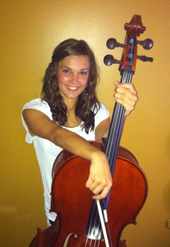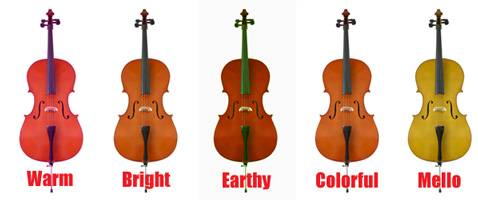 So you want to learn the cello? I can’t blame you. Who would not want to learn the only instrument that can produce a Mesmerizing tone. Before you start your journey consider the below steps and get ready for the fun!
So you want to learn the cello? I can’t blame you. Who would not want to learn the only instrument that can produce a Mesmerizing tone. Before you start your journey consider the below steps and get ready for the fun!
Step One: Open your mind
Prepare yourself for new experiences and a new outlook. Activities like surfing the web for hours on end might no longer interest you; you will find that the way you see your free time has changed for the better. Get ready for the possibilities of new ideas and new friends to share them with; get ready for a new you!
Step Two: Make a plan
Like any goal you want to reach, cello lessons require making a plan and sticking to it. Set small, reasonable milestones for now; you can always raise the bar higher as you progress. Think about what type of music you want to play and who your “audience” will be—do you want to join a group or just play in your living room for your own enjoyment? Decide on your destination before you take the first step on your journey.
Step Three: Determine your learning style
There are several formats in which to learn. You can take lessons via online instruction such as video tutorials or live instructors. You can pick up a few audio tapes or books on learning to play the cello and teaching yourself. Or, if you are a more traditional learner, you can hire an instructor or join a local music class.
Step Four: Decide on a budget
Do you want to rent an instrument or do you want to own one? Would you prefer to learn on your own or hire an instructor to teach you? The amount you will need to invest in will depend heavily on your answers to these questions.
Step Five: Rent or purchase a cello
Based on your personal preferences and budget, you will need to either rent or purchase a cello to use in taking start. Some music stores or companies will allow you to rent with the option to buy after a certain point in the contract; if you would like to own your instrument but do not have the funds to do so immediately this is a good option to think over. This is also a great option if you are interested in the cello but do not know if you are ready to make the investment.
Step Six: Customize
One of the most important parts of playing the cello (second, only, to the cello itself!) is the bow. Since you are just starting out , do not go overboard when deciding on a bow; a simple student model will serve you well for the first part of your instruction.Your new cello will also need to be protected. Depending on how you have obtained your cello (rent or purchase), you may or may not have a case for it. Soft or hard cases are available in different materials and price ranges, and it is important to chose the option which works best for you while still keeping your instrument safe.
Another vital accessory to your playing is rosin. Rosin is the material that allows your bow to glide across the strings of the cello and is available in small containers from most music stores that carry string instruments. Rosin is important to keeping your bow and cello strings in ideal playing condition.
Step Seven: Select your learning method
If you are going with a self-learning route, it is time to gather your materials and determine your own lesson plans. If you are going to learn from someone else, now is the time to get in touch with your instructor and either set up private cello lesson or join a class.
Step Eight: Broaden your horizons
Once you have a good grasp on the fundamentals—things such as how to hold the cello and the bow, how to position your fingers over the strings to produce various notes and tones—and have played several pieces to your satisfaction, you can start looking for the next step; find a musical group to join! There are musical ensembles that play in various locations and for different types of audiences in professional and casual capacities. You may not be interested in playing on a stage or for the public; if that is the case, you might find great pleasure in finding a cello fellowship-type group instead. You can learn a lot and make lasting friendships with others who have similar interests as you. Either way, get out there!
Step Nine: Enjoy and share
Take the time to enjoy the new skill you have learned and the music you can now create. Even if you are not interested in playing for a large audience, gather together a few friends and share your new gift.

